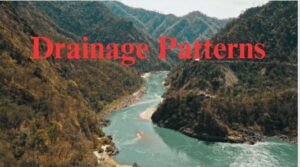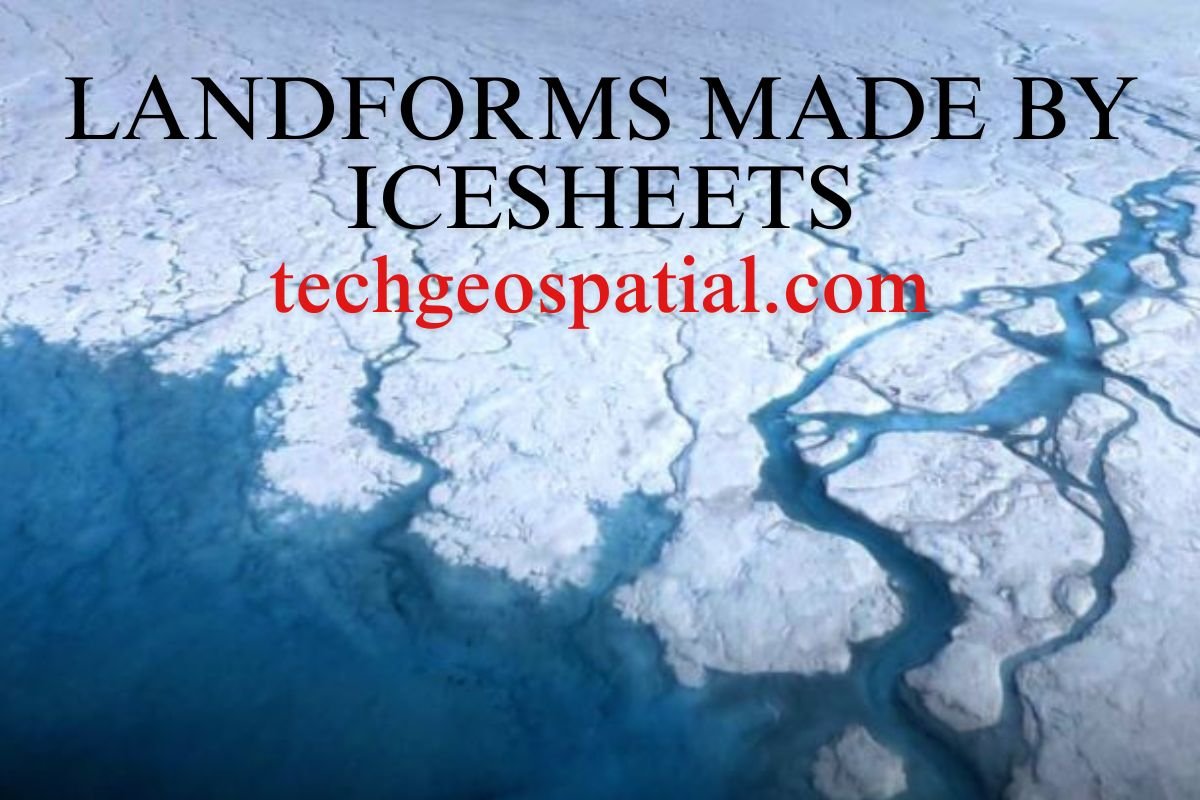Introduction to Drainage Patterns
Understanding drainage patterns is essential to comprehending how water moves through different types of terrain. They depict how rivers, streams, and other bodies of water are naturally arranged throughout a terrain. These patterns provide important information on how the Earth’s surface is being shaped by geological and environmental processes.
What are Drainage Patterns?

The system of interconnecting channels that allows water to flow off the surface of the ground is referred to as drainage patterns. Water’s long-term depositional and erosional processes create these patterns. They can be as simple as branching systems or as complicated as irregular arrangements, depending on their level of complexity.
Importance of Understanding Drainage Patterns
Understanding drainage patterns is crucial for several reasons. Firstly, it helps in deciphering the geological history of a region. By studying the direction and arrangement of drainage channels, geologists can infer the underlying geological structures and processes that have shaped the landscape over millions of years.
Secondly, knowledge of drainage patterns is essential for water resource management and environmental conservation. It allows planners and policymakers to predict flood risks, design efficient irrigation systems, and identify sensitive ecosystems that need protection.
Furthermore, understanding drainage patterns is vital for fields such as hydrology, ecology, and geomorphology. It provides valuable data for studying ecosystems, water cycles, and landform evolution.
Types of Drainage Patterns

Drainage patterns are diverse and reflect the complex interplay of geological, climatic, and topographic factors in a region. Here are some of the key types of drainage patterns found in nature:
1. Dendritic Drainage Pattern
-
- Description: Resembles the branching structure of tree roots.
- Characteristics: Consists of a network of streams and rivers flowing in multiple directions.
- Formation: Occurs in regions with uniform rock composition and gentle slopes.
- Examples: Commonly found in areas with sedimentary rock formations, such as plains and plateaus.
2. Trellis Drainage Pattern
-
- Description: Resembles a garden trellis with parallel main streams and tributaries joining them at right angles.
- Characteristics: Main streams are parallel, with smaller tributaries intersecting them at right angles.
- Formation: Typically occurs in regions with folded or tilted rock layers.
- Examples: Found in mountain ranges and folded mountain belts where valleys and ridges align parallel to the main stream flow.
3. Rectangular Drainage Pattern
-
- Description: Forms a grid-like network with streams and rivers flowing at right-angle bends.
- Characteristics: Streams follow natural cracks and faults in the landscape, creating rectangular shapes.
- Formation: Occurs in regions with jointed or fractured rock formations.
- Examples: Observed in desert regions and areas with extensive faulting and jointing.
4. Radial Drainage Pattern
-
- Description: Streams flow outward from a central high point like spokes on a wheel.
- Characteristics: Streams radiate outward in all directions from a central peak or dome.
- Formation: Typically found around volcanic cones or domes.
- Examples: Common in volcanic regions and around intrusive igneous formations.
5. Parallel Drainage Pattern
-
- Description: Streams and rivers flow parallel to each other over long distances.
- Characteristics: Maintains a consistent direction with parallel streams.
- Formation: Occurs in regions with uniform rock types and gentle slopes.
- Examples: Found in coastal plains and river valleys with extensive sedimentary deposits.
6. Deranged Drainage Pattern
-
- Description: Lacks a coherent structure with streams flowing in random directions.
- Characteristics: Streams intersect at irregular angles, indicating disrupted flow patterns.
- Formation: Occurs in regions with complex geological history, often due to glaciation or tectonic activity.
- Examples: Found in recently glaciated landscapes and areas with significant geological instability.
7. Contorted Drainage Pattern
-
- Description: Exhibits twisted or winding stream channels.
- Characteristics: Streams follow meandering paths, creating irregular patterns.
- Formation: Results from complex geological processes such as folding and faulting.
- Examples: Observed in regions with highly folded rock formations or active tectonic activity.
8.Centripetal Drainage Pattern
-
- Description: Streams converge towards a central point.
- Characteristics: Streams flow inward from all directions towards a central basin or depression.
- Formation: Typically found in regions with a central low-lying area, such as an enclosed basin or sinkhole.
- Examples: Common in karst landscapes with limestone bedrock and sinkholes.
9. Barbed Drainage Pattern
-
- Description: Streams exhibit sharp bends resembling the barbs of a fishhook.
- Characteristics: Streams abruptly change direction, forming V-shaped bends.
- Formation: Results from erosion and deposition processes along stream banks.
- Examples: Found in regions with soft or erodible sedimentary rock formations.
10.Annular Drainage Pattern
-
- Description: Forms a ring-like or circular pattern.
- Characteristics: Streams follow a circular path, often around a central high point.
- Formation: Occurs in regions with a central uplift or dome, where streams erode concentrically.
- Examples: Common in volcanic calderas and structural basins.
Conclusion
In conclusion, drainage patterns are integral to understanding the dynamics of Earth’s surface processes. They offer valuable insights into geological history, water resource management, and environmental conservation. By studying the various types of drainage patterns, scientists and researchers can unravel the mysteries of our planet’s landscapes and better prepare for the challenges of the future.
FAQs
- Why are drainage patterns important for water resource management? Understanding drainage patterns helps predict flood risks, design efficient irrigation systems, and identify sensitive ecosystems.
- Where are dendritic drainage patterns commonly found? Dendritic patterns are prevalent in areas with uniform rock composition and gentle slopes, such as plains and plateaus.
- What geological conditions favor the formation of trellis drainage patterns? Trellis patterns typically occur in regions with folded or tilted rock layers, such as mountain ranges.
- Can you give an example of a region with a rectangular drainage pattern? The Basin and Range Province in the western United States exhibits a prominent rectangular drainage pattern.
- What causes the formation of a radial drainage pattern? Radial patterns typically form around volcanic cones or domes, where streams flow outward from a central high point.





